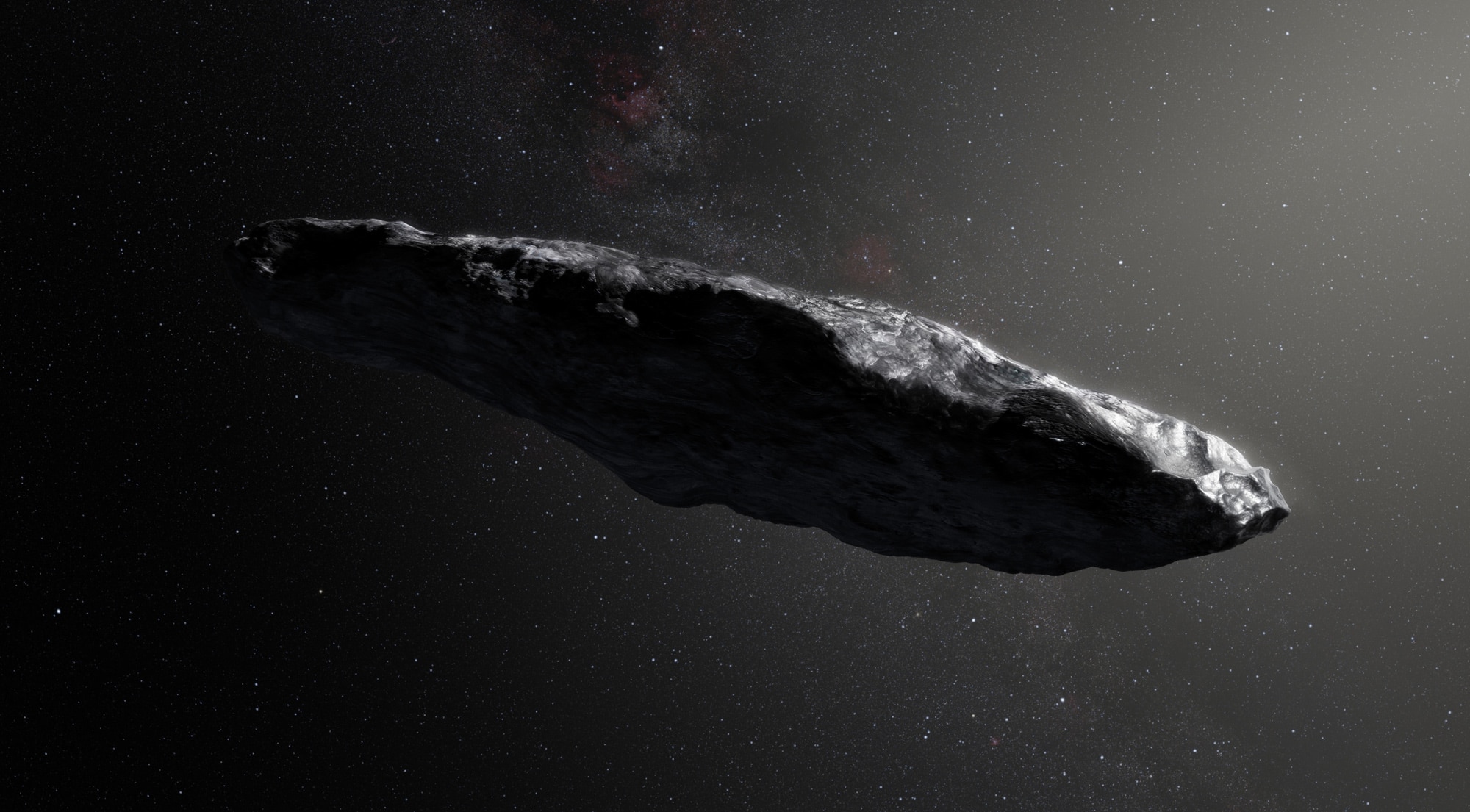Create a free profile to get unlimited access to exclusive videos, sweepstakes, and more!
Did our first known interstellar visitor come from a dead star?

Late last year, an asteroid was discovered on a very unusual orbit: It was moving far too rapidly to be a member of our own solar system. Once enough observations were in, it became very clear that this was an object that came from another star, deep in interstellar space. It was a truly alien visitor.
It was given the designation 1I/2017 U1 ('Oumuamua), and is the first known object to have definitively come from outside our solar system.
And that brings up a very interesting question indeed: Where did it come from?
Tracing the orbit backward is hard; it wasn't discovered until after it had already whipped around the Sun and was on its way out. Trying to extrapolate the exact part of the sky it came from is very sensitive to any uncertainties in its exact distance from the Sun at closest approach, so only a rough estimate is possible. If you're curious, it appears to have come from the direction of the constellation of Lyra.
That hardly narrows it down all that much. There are a lot of stars in that direction! But a new paper makes an intriguing suggestion: It may have come from a white dwarf.
A white dwarf is the dead core of a star like the Sun that long ago ran out of fuel. When that happens (and the details are a tad complex) the star expands into a very luminous red giant, blows off its outer layers, and leaves behind a tiny, Earth-sized, fiercely hot, and very dense ball of compressed matter: a white dwarf.
If the star had a planetary system, then a lot of those planets can survive their host's demise. Over billions of years, gravitational interactions of the planets with any asteroids in the system can drop them toward the star on very long, nearly radial orbits. If it gets too close, the asteroid can get torn apart by the fierce gravity of the white dwarf. At that point the debris can orbit the dead star in a ring, or it can drop down to the surface.
White dwarfs are a little bit (well, a lot) weird; their gravity is so strong that heavier elements (like the kind that make up asteroids) quickly sink over a timescale of a mere 100,000 years or so, leaving behind lighter stuff like hydrogen and helium. So if we see heavier elements in the white dwarf, they must be there due to a recent breakup of asteroids or similar bodies.
But here's an important point: When you look at orbits statistically, you find that planets tugging on asteroids will eject far more material from the system altogether than drop it down to the white dwarf. So for every kilo of asteroid that we see in a white dwarf, 10–100 times as much was kicked out into interstellar space!
See where this is going? The new research looks at these numbers and tries to see if it makes sense that 'Oumuamua could have come from a white dwarf.
Let me make a brief aside: The work done uses what's called a Fermi approximation, an attempt to make a numerical estimate of the solution to some problem using very rough numbers, what we also call an order-of-magnitude estimate (an order of magnitude is a factor of 10, so 100 is an order of magnitude bigger than 10, and 10 is an order of magnitude bigger than 1). The beauty of this type of math is that it gives you a very broad idea if something makes sense or not, what you can think of as a sanity check. You might be off by a factor of 5 or even 10, but that's no big deal; you're just looking to see if the numbers make sense.
That's what the astronomers did in this case. They started with a previously observed sample of known white dwarfs with certain characteristics — hotter than 13,000° C, more than .3% as luminous as the Sun (both of which make them easier to see), and within 260 light years of the Sun. Averaging over all of these, they found that material accumulated on the surfaces of these dwarfs at a rate of about 300 metric tons per second. When I read that the hair on the back of my neck stood up. That's a lot.
Assuming the dwarfs have a median age of about 5 billion years, that means each has accumulated about 1% of the Earth's mass worth of asteroidal material over their lifetimes. But that in turn means that anywhere from 10–100% of the Earth's mass worth of rocks were ejected into interstellar space due this same process by each white dwarf!
An earlier paper estimated how many interstellar visitors we should get like 'Oumuamua, and it turns out the number of such rocks ejected by white dwarfs is within an order of magnitude of this. So it's by no means sure either way, but it's entirely possible our alien guest came from a star long dead.
And there's another interesting point they make: If 'Oumuamua were more like a comet, with an icy crust, than that material should have turned into a gas when it rounded the Sun, surrounding it with a fuzzy halo of material (called a 'coma'). None, however, was seen. But that is what you'd expect if it came from a white dwarf; it's likely any volatile material like water ice would have been vaporized away when the object's original host star turned into a red giant! So that, at least, is consistent with what we saw.
Bottom line: We don't know which star or what kind it was that 'Oumuamua once called home. But we can make some guesses. And the better news is that it may have been the first such object we've seen, but it most certainly won't be the last. These are passing us all the time, but until very recently they've been very hard to find. But now we're building better telescopes that can the sky deeper and more efficiently, and you can bet we'll be finding more. Eventually we'll see enough that we can analyze them better, categorize them, and understand what kinds of stars they came from.
That's terribly cool. Visitors from another star that we can study right here from home! That saves us a very, very long trip.
P.S. The research paper was published as part of the Research Notes of the American Astronomical Society, a non-peer-reviewed collection of short notes about works in progress, or research that may not (yet) merit a full-blown journal paper. Perusing them is fascinating and a lot of fun; they're short, and generally easier to digest than massive papers.



























